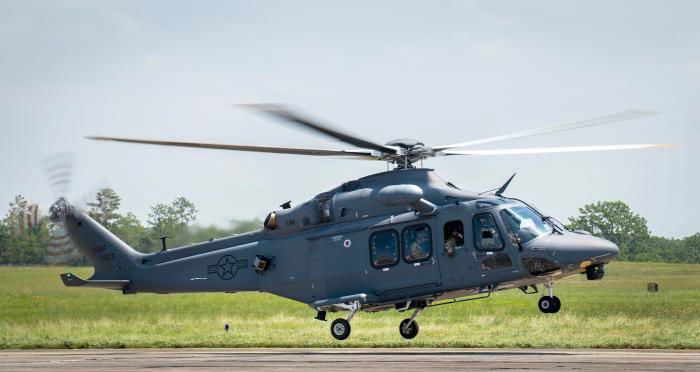The USAF has scaled back its fielding plans for the MH-139A Grey Wolf multi-mission helicopter, reducing the size of the planned fleet by nearly 50%.
As a result, the 316th Wing’s 1st Helicopter Squadron (HS) at Joint Base Andrews, Maryland, and the 58th Special Operations Wing’s 36th Rescue Squadron at Fairchild AFB, Washington, will continue to operate the ageing UH-1N Huey for the foreseeable future. The two units are respectively assigned to the Air Force District of Washington and Air Education and Training Command. The move to reduce MH-139 procurement from 80 to 42 helicopters was revealed as part of the USAF’s proposed FY25 budget.

The USAF had previously reduced planned orders for the Grey Wolf from 84 to 80 when it cancelled plans to field four helicopters with the 374th Airlift Wing at Yokota Air Base, Japan. The bulk of the fleet – comprising 33 helicopters – will be operated by three squadrons that report to Air Force Global Strike Command’s 582nd Helicopter Group at Francis E Warren AFB in Wyoming. As a result, 11 MH-139As will be fielded with the 37th, 40th and 54th HS at Francis E Warren AFB, Malmstrom AFB in Montana, and Minot AFB, North Dakota. The remaining nine helicopters will be divided between the Grey Wolf schoolhouse at Maxwell AFB, Alabama, and for testing duties at Eglin AFB, Florida.
Developed as a joint venture between Boeing and Leonardo, the Grey Wolf is a militarised version of the latter’s AW139 commercial helicopter. The programme has experienced its share of issues that were related to the conversion from civil to military configuration. Delays with the Federal Aviation Administration (FAA) certification caused the USAF to slip the first low-rate initial production (LRIP) order for eight helicopters from FY21 to FY23.
Like many other programmes, additional issues discovered during test and evaluation could cause the MH-139A to fall short of “operational effectiveness requirements” as noted in a report from the US Department of Defense’s (DOD’s) Director of Operational Test and Evaluation (DOT&E). While the smaller procurement reduces the overall cost of the Grey Wolf programme from $2.55bn to $1.42bn, it causes the unit cost per helicopter to increase by 14.2% from $34.47m to $39.37m.





